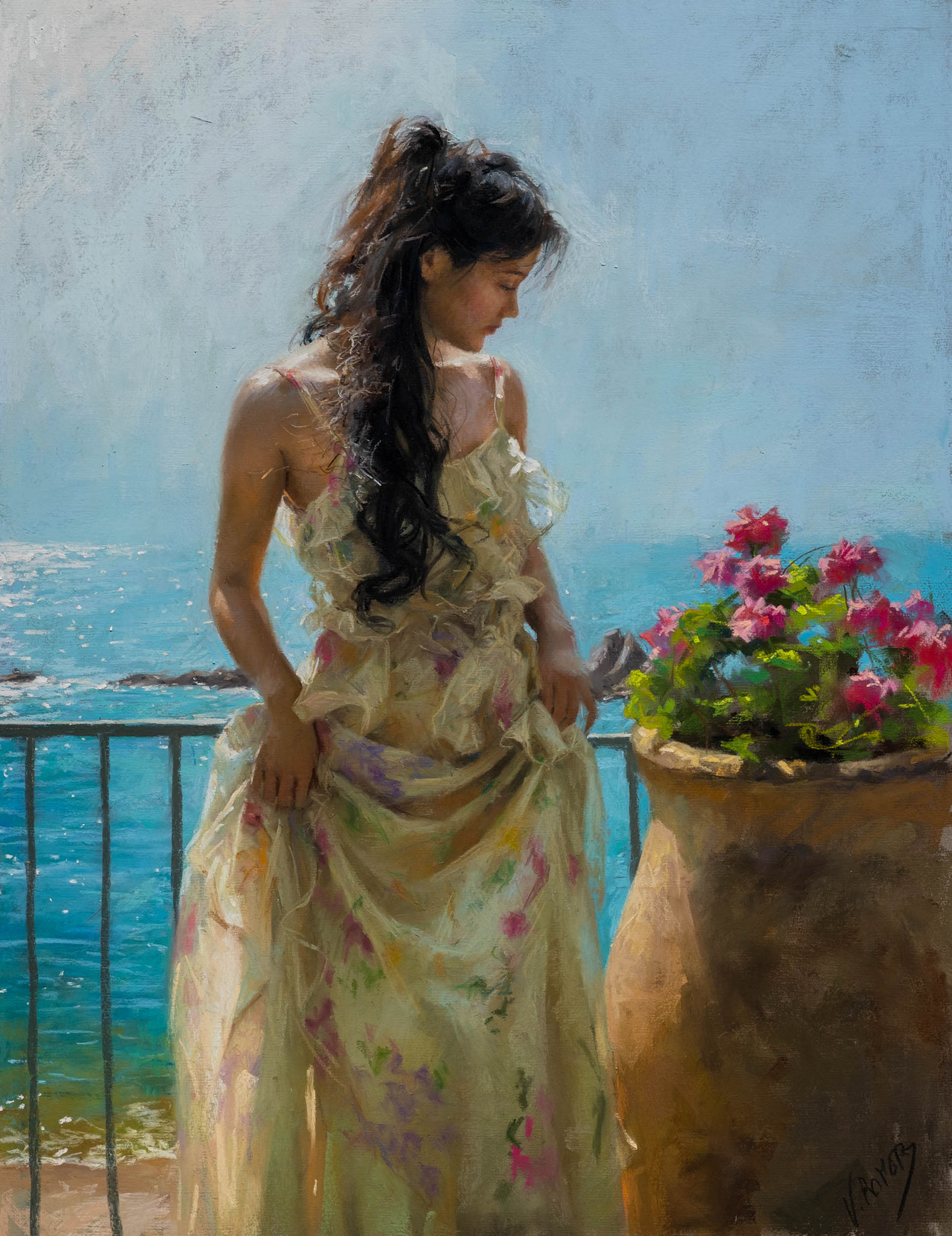Friedrich Kallmorgen (1856-1924) was a German Impressionist painter who specialized in landscapes and cityscapes.
His father was an architect. From 1862 to 1863, he received his first drawing lessons from his uncle, the portrait and landscape painter Theodor Kuchel.
In 1875, he enrolled at the Kunstakademie Düsseldorf, where he studied with Andreas Müller, Ernst Deger and Eugen Dücker.
After a study trip to Franconian Switzerland, with Carl Friedrich Lessing, he attended the Academy of Fine Arts, Karlsruhe, where he was originally taught by Ernst Hildebrand, followed by Hans Fredrik Gude.
In the summer of 1878, he undertook painting expeditions to Lüneburg Heath and the Harz Mountains.
In 1881, after a brief stay in Berlin, he returned to Karlsruhe and completed his studies with Gustav Schönleber.
Together with Schönleber and Hermann Baisch, he took trips to France, Belgium and Holland.
Upon their return, he married the flower painter, Margarethe Hormuth.
In 1889, he became one of the founders of the Grötzingen artists' colony.
Two years later, Frederick I, Grand Duke of Baden named him a Professor.
During the 1890s, he designed trading cards for the Stollwerck chocolate company of Cologne. His 1899 series on Italian folksongs was especially popular.
In 1901, he was appointed a teacher of landscape painting at the Berlin University of the Arts, succeeding Eugen Bracht.
In 1908, he was awarded a gold medal at the "Große Berliner Kunstausstellung".
He continued to travel widely, visiting Norway and Russia. After a brief residency in Heidelberg, he returned to the artists' colony near Karlsruhe and died there. | Source: © Wikipedia
Friedrich Kallmorgen (1856-1924) è stato un pittore impressionista Tedesco, specializzato in paesaggi e paesaggi urbani.
Suo padre era un architetto. Dal 1862 al 1863 ricevette le prime lezioni di disegno da suo zio, il ritrattista e paesaggista Theodor Kuchel.
Nel 1875 si iscrisse alla Kunstakademie di Düsseldorf, dove studiò con Andreas Müller, Ernst Deger e Eugen Dücker.
Dopo un viaggio di studio nella Svizzera francone, con Carl Friedrich Lessing, frequentò l'Accademia di Belle Arti di Karlsruhe, dove inizialmente ebbe come insegnante Ernst Hildebrand, seguito da Hans Fredrik Gude.
Nell'estate del 1878 intraprese spedizioni di pittura nella brughiera di Lüneburg e sui monti Harz.
Nel 1881, dopo un breve soggiorno a Berlino, tornò a Karlsruhe e completò i suoi studi con Gustav Schönleber.
Insieme a Schönleber e Hermann Baisch viaggiò in Francia, Belgio ed Olanda.
Al loro ritorno sposò la pittrice di fiori Margarethe Hormuth.
Nel 1889 fu uno dei fondatori della colonia di artisti di Grötzingen.
Due anni dopo Federico I, granduca di Baden, lo nominò professore.
Durante gli anni novanta dell'Ottocento disegnò figurine per l'azienda di cioccolato Stollwerck di Colonia.
La sua serie del 1899 sui Canti popolari italiani fu particolarmente popolare.
Nel 1901 fu nominato insegnante di pittura di paesaggio presso l'Università delle Arti di Berlino, succedendo a Eugen Bracht.
Nel 1908 gli venne assegnata una medaglia d'oro alla "Große Berliner Kunstausstellung".
Ha continuato a viaggiare molto, visitando la Norvegia e la Russia.
Dopo una breve residenza a Heidelberg, tornò nella colonia di artisti vicino a Karlsruhe e lì morì. | Fonte: © British Wikipedia


























